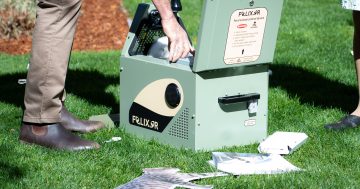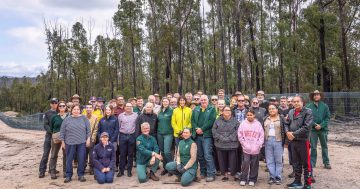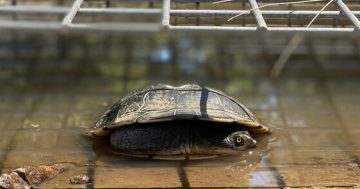Lucas Forbes* says machine-learning camera software has given humans a new edge in the fight against feral cats on Kangaroo Island.
 A camera network that has “learnt” to identify feral cats is helping protect native animals and farming businesses on Kangaroo Island.
A camera network that has “learnt” to identify feral cats is helping protect native animals and farming businesses on Kangaroo Island.
Kangaroo Island Landscape Board has installed 70 cameras on the island’s Dudley Peninsula to map where feral cats are active.
Passing animals trigger the cameras and, rather than wait for humans to retrieve the pictures and interpret them, software identifies the animal.
Feral cat eradication program project leader Dr James Smith said this network gave real-time information about cat movements.
“One of the biggest issues for us is knowing where to focus our efforts and to do that, we need a lot of eyes on the ground,” he said.
“The best way to do that traditionally has been to put out camera traps.
“Of course, the more camera traps you put out, the more time you have to spend changing the batteries, looking through the images and maintaining the cameras.
“So, we’re moving now towards a 4G connected system, where the cameras take a photo of an animal that walks past the camera and that gets sent to a company called eVorta, which runs a machine-learning algorithm over the image and it can detect cats and echidnas and bandicoots and other species of interest to us.
“We estimate that every 25 of these cameras saves us about 40 days of staff time a year.”
Feral cats not only hunt native wildlife but can also spread a disease called toxoplasmosis, which causes abortions and stillbirths in sheep and costs Australian agriculture $12 million a year.
Machine learning involves computers teaching themselves to perform tasks by identifying patterns in data, such as pixels in an image.
Hamish Shah is the founder and platform engineer for eVorta, the company that developed the technology the cameras on Kangaroo Island use to identify feral cats.
Mr Shah said it was more efficient to create a system to train itself rather than try and program it all themselves.
“Before this, we wrote bits of code to look for shapes or something very specific but then we handed over the skill of learning what an animal is entirely to a computer and we gave it some basic premises, which are kind of how our eyes already work,” he said.
“So, at one side of the neural network it would look for maybe patterns like individual dots that connect up, and then as you go deeper into the neural network it will start seeing fluff or fur.
“And then it goes a bit deeper into a neural network that says, ‘OK, if you see the sort of pattern, it is probably a fur pattern’ and then as you go deeper and deeper still, it’s like, ‘OK, this is the tail’.
“Eventually it will get to a point where it can classify [what it sees] as a cat.”
Dr Smith said the Kangaroo Island Landscape Board wanted to eventually install 200 cameras on the Dudley Peninsula as part of its goal of eradicating feral cats in that area by the middle of 2023.
*Lucas Forbes is the rural reporter for ABC North and West.
This article first appeared at abc.net.au





